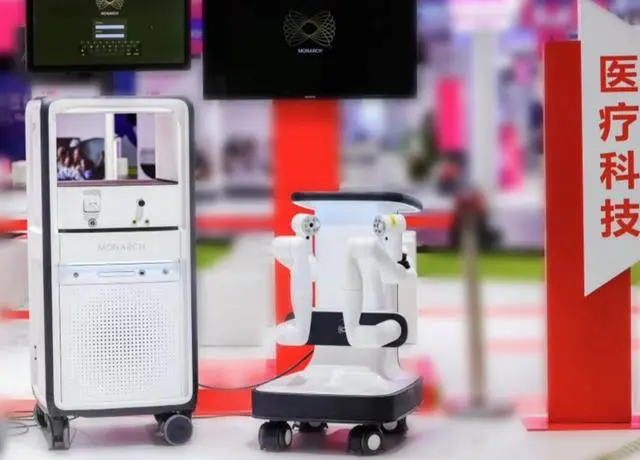On November 7th,
Johnson&Johnson's medical technology department announced that it will submit an application to the US Food and Drug Administration in the second half of 2024 to initiate clinical trials of the surgical robot system Ottava.
This is about 2 years behind the original plan. According to Johnson&Johnson's previous plan, it is expected to conduct clinical trial registration of the device in 2022.
From a technical perspective, Johnson&Johnson stated that the
surgical robot Ottava integrates four robotic arms into a standard size operating table, which is two fewer than the originally planned six robotic arms.

Johnson&Johnson has also integrated robot systems and digital platforms. The company has acquired surgical robot company AurisHealth and its FDA approved digital platform Monarch for $3.4 billion. At this year's CIIE, Johnson&Johnson announced that Monarch has become the first approved natural cavity diagnosis and treatment robot platform in China. This system can perform diagnosis and treatment through the natural lumen of the bronchus without incisions on the body surface, thereby accelerating the minimally invasive and precise diagnosis and treatment of lung cancer.
Surgical robots have become a cutting-edge field for medical technology companies to compete for. Medtronic has also developed the surgical robot system Hugo. At last year's CIIE, Medtronic's booth staged the "Robot Mobilization", bringing in three surgical robots, covering multiple fields such as spine, neurosurgery, and robot assisted surgery.
The Vision Fund Phase II of Softbank Venture Capital Fund has also completed its investment in the UK surgical robot startup CMR Surgical in recent years; A group of surgical robot companies represented by Tianzhihang have also emerged in China. However, currently in the field of surgical robots, Intuitive Surgery's Da Vinci surgical robots still dominate the market.
In order to encourage the development of the local medical robot industry chain, Shanghai released the "Action Plan for Promoting the Development of the Medical Robot Industry (2023-2025)" last month. The Action Plan points out that by 2025, Shanghai aims to become a source of domestic medical robot technology innovation, a hub for high-end manufacturing, and a demonstration site for collaborative application. The industrial level has significantly improved, and the industrial scale has reached 10 billion yuan.
Specifically, in terms of cutting-edge achievements, more than 10 internationally advanced innovative products should emerge; In terms of industrial level, it is necessary to create no less than 2 characteristic industrial clusters for medical robots, and cultivate about 10 leading enterprises in the subdivision of medical robot tracks; In addition, it is necessary to build around 5 professional and technical public service platforms, establish more than 3 medical robot application demonstration platforms, and form more than 10 replicable application demonstration scenarios that can be promoted. The surgical robot track, rehabilitation robot track, and auxiliary service robot track will become key development areas.
Industry insiders believe that innovation in payment methods is crucial for the development of the surgical robot industry. Although surgical robots have played an important role in the construction of smart hospitals, the current attitude of China's medical insurance policy towards surgical robots still needs to be further clarified.
In September 2021, the Beijing Medical Insurance Bureau officially priced robot assisted orthopedic surgery as an auxiliary operation and included it in the medical insurance payment catalog together with disposable robot specialized devices. This is also the first time that orthopedic surgical robots have been included in medical insurance as an emerging medical technology.
Due to the long-term low pricing of public hospitals, it has also become a bottleneck for the promotion of
high-end medical equipment and devices in Chinese public hospitals. Now, the country has proposed that public hospitals have the pricing power for medical services, which will also be conducive to the popularization of advanced equipment in public hospitals in the future. "A person in charge of surgical robots from a multinational
medical device manufacturer told a reporter from First Financial.
